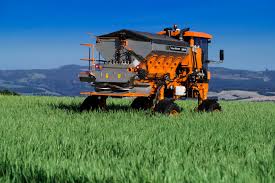Just like people and animals, grass and plants require nutrients to grow. Most grass and plants do not naturally produce enough of the nutrients they need to thrive, which can result in browning, wilting, and fewer blooms. Fortunately, fertilizers can give foliage a boost of vitamins and minerals through nutrients to increase the health of the plant.
Healthy lawns are better equipped to resist disease, weeds, and pests which is why it is so important to increase the nutrients in turf and soil.
What is Fertilizer?
Fertilizer is a mixture of nutrients that lawns often lack. Fertilizers are available in liquid and granular forms and can be natural, meaning they're made of natural or organic materials, or synthetic, meaning the nutrients were manufactured in a lab.
All fertilizers are labeled with their macro-nutrients, the three nutrients that are essential for plant growth:
- Nitrogen (N) helps green-up lawns and produces leafy growth in plants.
- Phosphorus (P) helps strengthen the roots of plants.
- Potassium (K) enhances the overall growth of plants, keeping them healthy and balanced.
Together, these three nutrients are known as NPK, named for their atomic elements on the periodic table. The levels of N-P-K will be listed on the bag or bottle of fertilizer, always in the order of nitrogen-phosphorus-potassium. The numbers indicate the percentage of each element per pound of fertilizer. For example, a fertilizer listed with an N-P-K of 20-0-8 has 20% nitrogen, 0% phosphorus, and 8% potassium per pound. Some labels will also help you calculate the amount of N-P-K per 1,000 square feet, helpful for large applications.
PRO TIP
Another way to remember the order of the macro-nutrients is to remember "Up, Down, and All Around." Up refers to Nitrogen, which helps the growth of the plant above the soil, Down refers to Phosphorus, which helps the roots under the soil, and All Around refers to Potassium, which helps the overall health of the plant.
Natural fertilizers tend to have a lower percentage of N-P-K than synthetic fertilizers, meaning you will have to use more natural fertilizer for the same results. Synthetic fertilizers often work faster than natural fertilizers, however, natural fertilizers often contain additional nutrients that are beneficial to turf health. Natural fertilizers are also less likely to burn lawns than synthetic fertilizers.
Mono Ammonium Phosphate Map Fertilizer 11-44 -0 Granular
Testing Your Soil for Nutrients
Knowing what nutrients your soil has or is lacking will help you select the best fertilizer. A good way to find out what nutrients the soil needs is to take a soil sample for testing.
At home soil test kits make soil testing easy. Just collect your sample, send the kit back in the pre-addressed envelope, and you will be sent your results via email in 7-10 days.
You can also reach out to your local extension office to find out how they will conduct the soil test. Typically, you will collect soil samples from around your lawn (front yard, backyard, side yard, gardens, etc.) and bring them to the extension office. The office will then run a test for a minimal fee (or for free!) and create a report on the nutrition content of your soil.
Some soil test results provide recommended fertilizer N-P-K values based on your soil's analysis. Other tests provide the soil analysis only. If your soil is lacking nitrogen, you will choose a fertilizer with a high nitrogen content. If you need more potassium, select a high potassium fertilizer. DoMyOwn's lawn care professionals can help determine what nutrients your lawn needs, even if your lawn is lacking any additional nutrients outside of the three main macro-nutrients, such as iron. They may also recommend that you use a soil amendment. Soil amendments improve nutrient deficiencies in soil, which help the soil better hold and grow turf.
PRO TIP
While you are taking the time to have a soil test conducted, have the local extension office identify your grass type if you do not already know it. That way, you will always know which fertilizers, herbicides, and fungicides will and will not be compatible with your grass.
How to Apply Fertilizer
Fertilizer comes in two forms - liquid and granular. Both are equally effective at fertilizing lawns, however they both have their pros and cons.
Liquid fertilizers work fast, as the fertilizer is quickly absorbed into the roots of the turf. However, liquid fertilizer needs to be applied more frequently and there is a higher chance of burning the lawn if you apply too much fertilizer.
Granular fertilizers are slower to absorb into the soil and roots, meaning it will take longer to improve the health of plants and grass. But, granular fertilizers do not need to be applied as often and there is less chance of burning the lawn.
Liquid fertilizers are often mixed with water in a hand pump sprayer or backpack sprayer, then sprayed onto lawns. Some liquid fertilizers can even be attached to a hose for easy application.
Granular fertilizers are applied to lawns and plant beds with a granular spreader. The lawn should be damp before applying the granules and then watered after the granules have been spread (a process known as "watering in") to activate the granules. Be careful not to apply granules in the full summer sun as that can cause fertilizer burn to the lawn.


